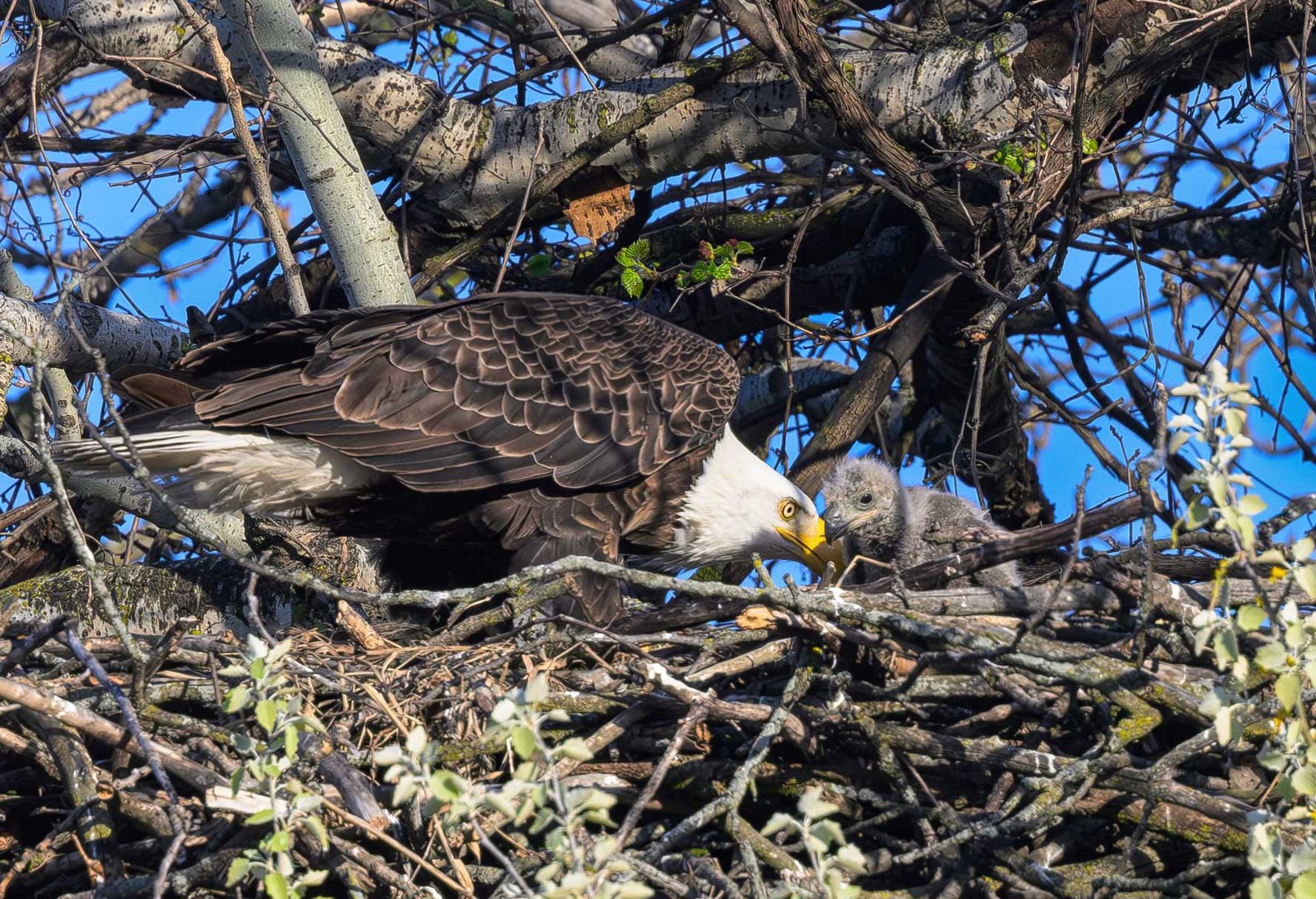Bald eagle nesting update: We have confirmed seven eaglets in four nests

It's been an exciting few weeks in the forest preserves monitoring four active bald eagle nests and in that time, we've seen some of the first eaglets that were hatched getting a lot bigger and more visible, and finally can say there is at least one eaglet in the final nest we were awaiting confirmation on.
Kara Morales, the field trip chair for the Will County Audubon Society, was able to get eyes on the eaglet at this particular nest over the weekend. The adult spent a good amount of time tearing apart flesh from some prey and feeding it to the eaglet. This particular eaglet is still fairly small and hard to see in the nest considering it is the most recent one to hatch.
The eaglets in the other nests, however, are growing fast and are much easier to spot like in the recent photo from one of the other nests at the top of this story.
Currently, we're aware of seven eaglets being raised in four different nests.
Each year, after we confirm eggs are being incubated, it's quite a waiting game until we get to see the eaglets because it takes some time for them to become visible. Not only are the eaglets tiny, but the nests generally are 4 feet to 5 feet wide and 2 feet to 4 feet deep and can also weigh up to 1,000 pounds. Nests are used year after year and require some maintenance prior to each nesting season. Eagles will usually keep building on the nest until it gets too big and it collapses, or the weight of it breaks the tree.
Bald eagles typically lay one to three eggs and one of the nests we're monitoring has produced 11 offspring since 2019.
RELATED: WATCH 'THE BUZZ' TO LEARN ABOUT BALD EAGLE NEST MONITORING
This year's new arrivals will further increase the local eagle population because they won't stray too far from home. Craig said that an increasing number of immature bald eagles in the winter indicates the ones we're seeing now are residents and not migrants. It's also evidence that we have good, clean water and a healthy fish population to support them year-round.
"To see eagles rebound like they have in this area in the past 10 years has been pretty exciting," Craig said. "To be threatened and endangered when I was a kid to what we’re seeing now, it's really a population explosion in our area over the past few years.
"They're just such majestic birds, it's hard not to be in awe of them," he said. "To continue to watch the nests over the years has been fascinating."
It's important to note that eagles and their nests are federally protected and human interference could cause the eagles to abandon their nests and their eggs. The National Audubon Society recommends being at least 330 feet away from a nest. That's about the length of a football field. In order to protect these birds, we never publicly disclose nesting locations. If you should come across a nest, be sure to keep your distance.
